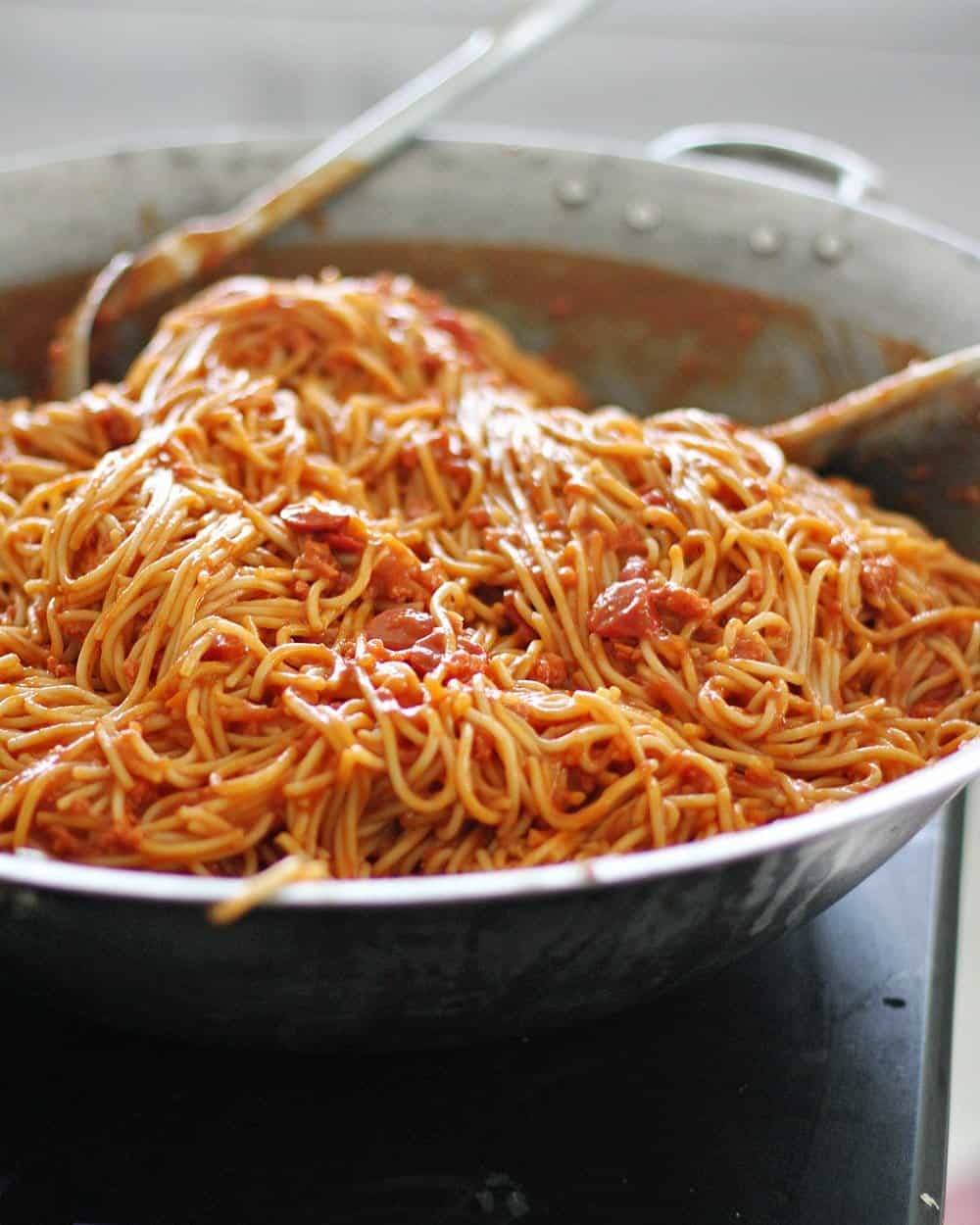
Filipino Spaghetti.
It’s a thing. It’s a sweet, sticky, saucy, even-sold-at-McDonald’s thing.
Much like the pancit from last week, this meal was served at almost every birthday party at the orphanage where I worked this last year, usually mushed together on kids’ plastic plates with heaping piles of steaming rice and some mixed vegetables. On this particular party day, Auntie Elvira and Auntie Puriza invited me into the kitchen and showed me how it’s done. Here’s the story, in pictures.
PS. Red hot dogs remain one of my unsolved mysteries about the Philippines.
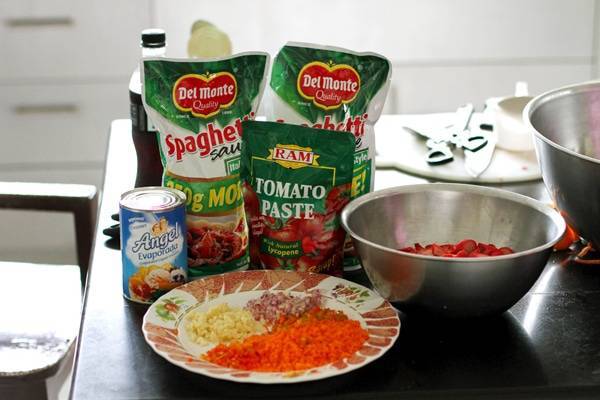
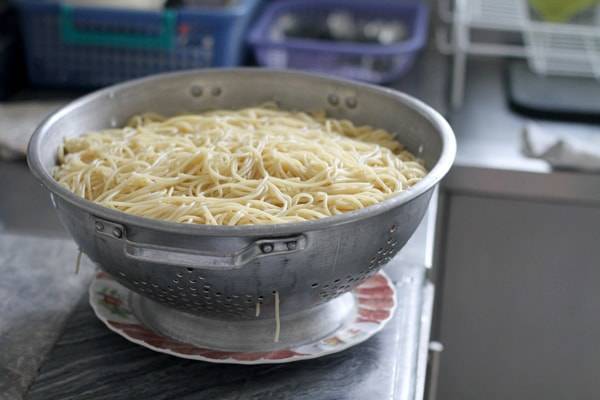
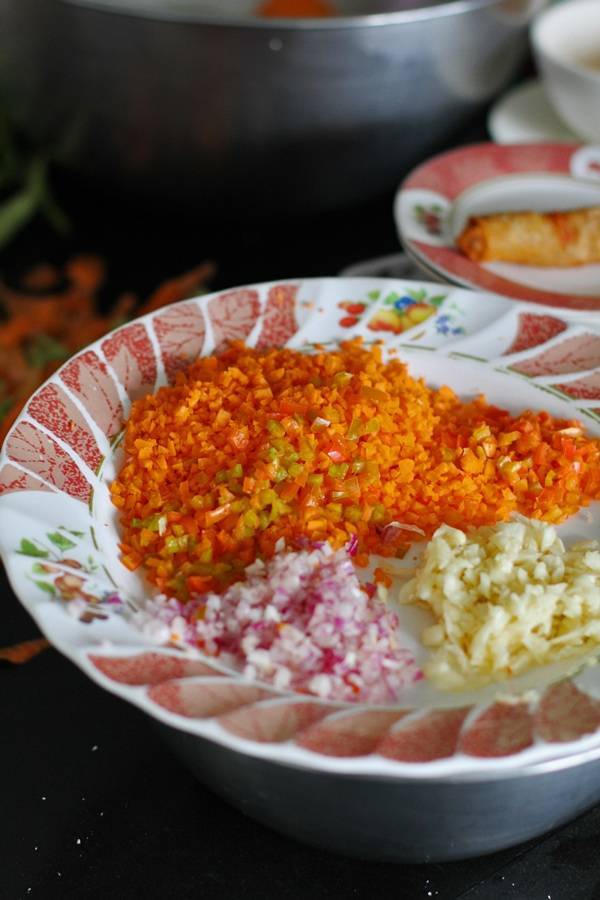
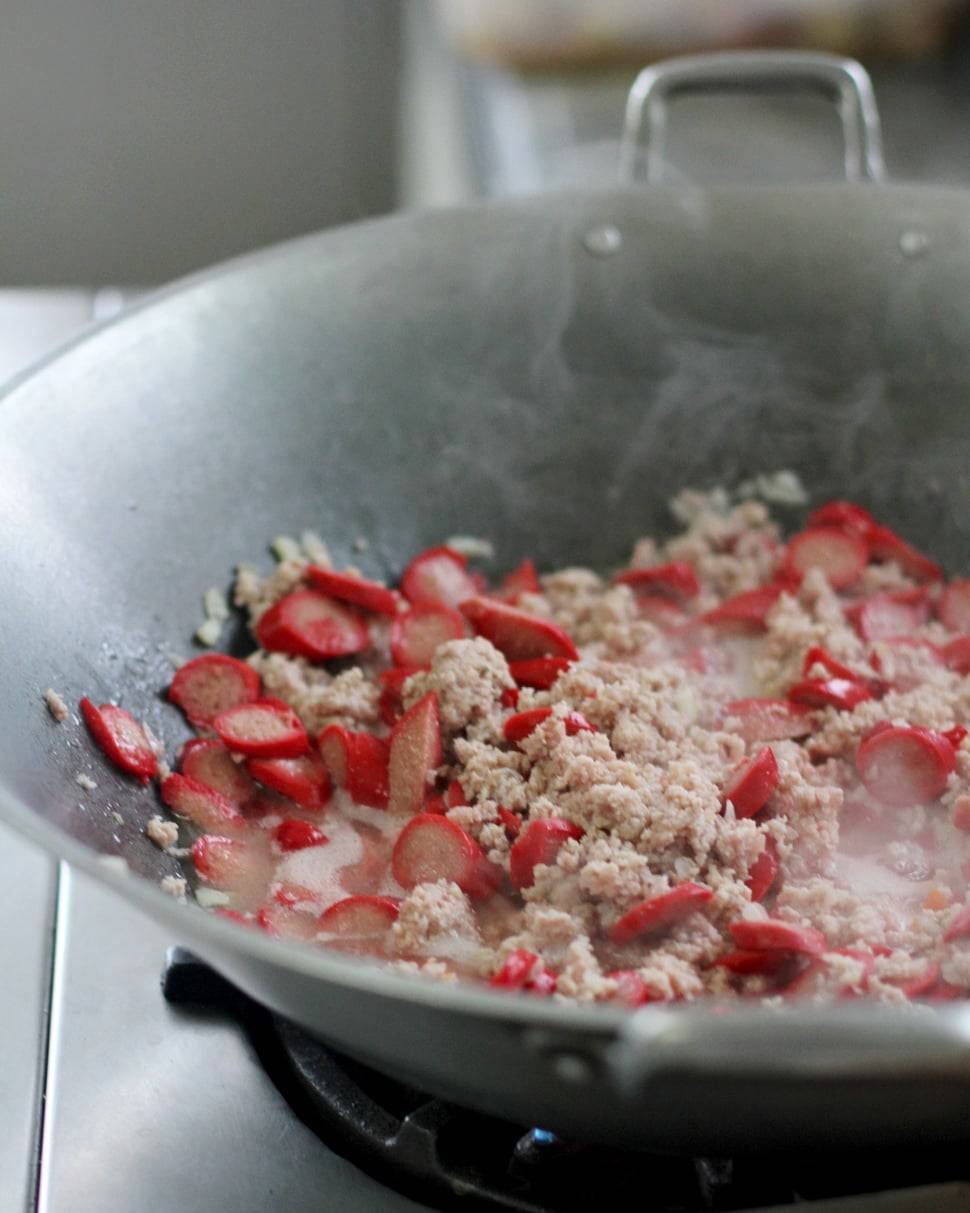
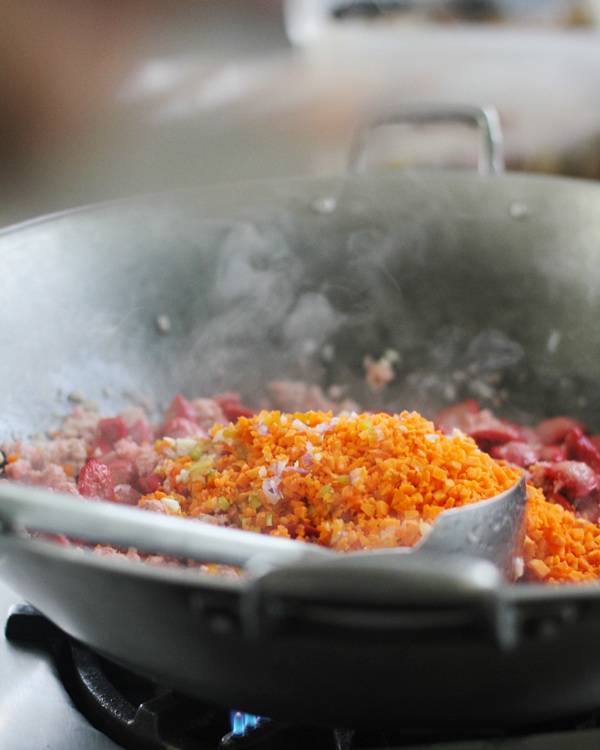
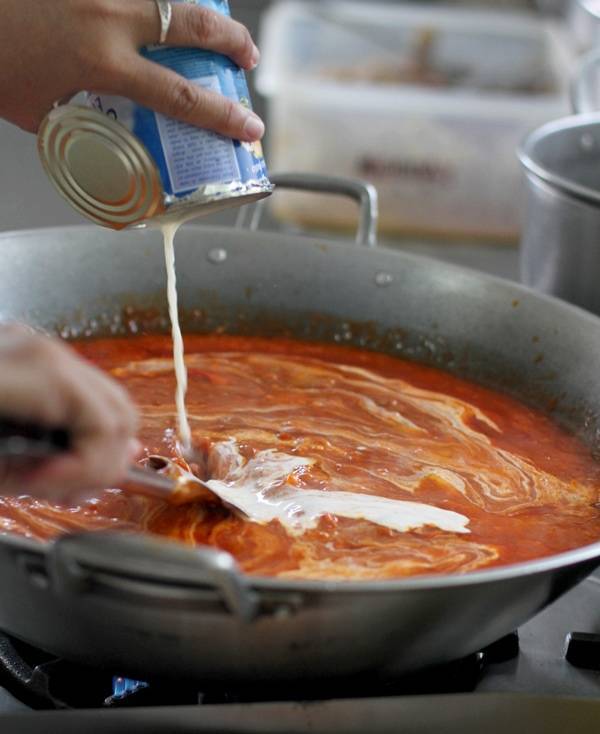
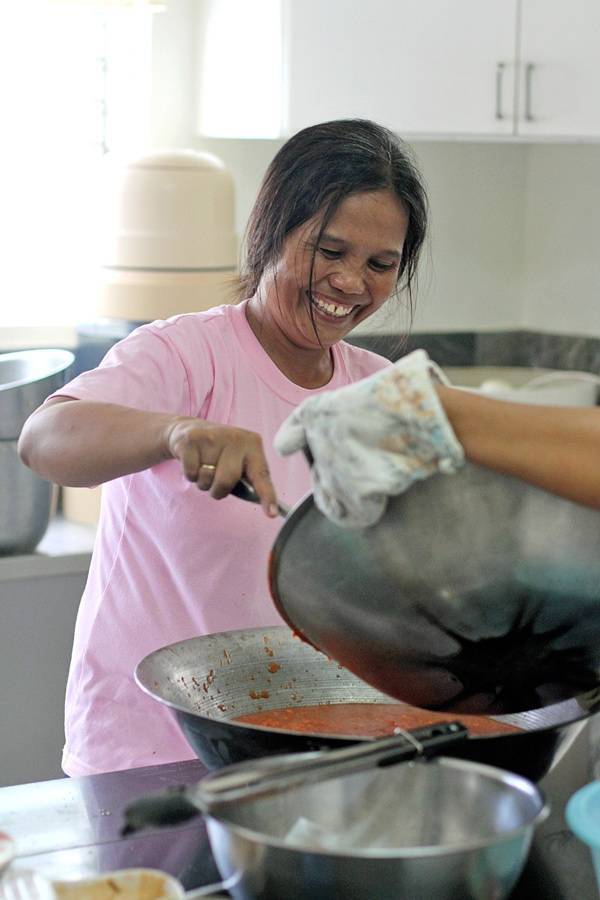
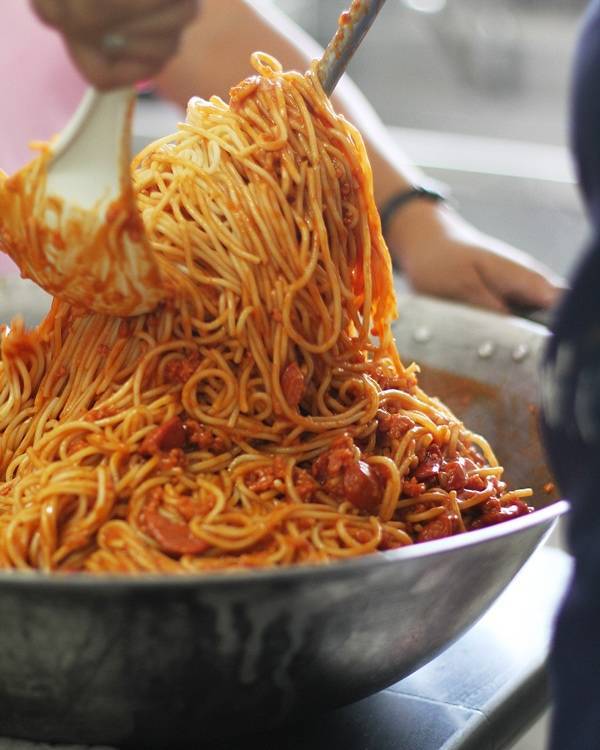
Filipino Spaghetti: FAQs
Just use 100% beef hot dogs.
Sure can!
The seasoning they use is called Magic Sarap and it just adds a salty flavor! Any basic salty-type seasoning would be fine.

Filipino Spaghetti
-
 Total Time: 1 hour 15 minutes
Total Time: 1 hour 15 minutes -
 Yield: 12-16 servings
Yield: 12-16 servings
Description
This recipe is every kid’s favorite – Filipino Spaghetti – and comes from the orphanage that I worked at for a year in Cebu. Spaghetti, hot dogs, tomato sauce, and seasonings. So simple, so good.
Ingredients
- 1 lb. spaghetti noodles
- 1 lb. Italian tomato sauce (the kind they used was called “Italian” but tasted sweet and was very smooth in texture)
- 8 ounces tomato paste
- 2 tablespoons minced onion
- 2 tablespoons minced garlic
- 2 tablespoons oil
- 1 lb. ground pork
- 1/2 cup minced carrots and red peppers
- 2 cups diced or thinly sliced hot dogs
- 1 cup water
- 1 tablespoon salt
- 1 teaspoon seasoning mix
- 7 ounces evaporated milk
- grated cheese for topping (they use a processed cheese similar to Velveeta)
Instructions
- Cook the noodles according to package directions. Set aside.
- Place the garlic, onion, and oil in a large saucepan or skillet. Saute for 3-4 minutes or until soft and fragrant. Add the ground pork and brown the meat until it’s completely cooked.
- Add the minced vegetables and hot dog pieces and stir to combine. Add the water and allow the mixture to simmer for 10-15 minutes. Add the tomato sauce and tomato paste to the meat and continue to simmer the mixture for another 10-15 minutes. Add the evaporated milk and salt and stir until incorporated.
- Combine the noodles and the sauce in a large pot or mixing bowl. Top with grated cheese. At Cherne they grate a processed cheese similar to Velveeta and let it melt into the top layer of the spaghetti.
Equipment
 Buy Now →
Buy Now →
 Buy Now →
Buy Now →
 Buy Now →
Buy Now →
-
 Prep Time: 15 minutes
Prep Time: 15 minutes
-
 Cook Time: 1 hour
Cook Time: 1 hour
-
 Category: Dinner
Category: Dinner
-
 Method: Sauté
Method: Sauté
-
 Cuisine: Filipino
Cuisine: Filipino
Keywords: spaghetti, filipino spaghetti, filipino recipe
Here’s my full post on the Children’s Shelter of Cebu website. While you’re there, you can check out the special projects page to see if there’s a need that you and your family could meet, like providing a meal (maybe even spaghetti!) for an entire home of 30 children for $33.
These kids are so precious to us – thank you for getting excited about this series with me and loving them from across the ocean!
{Just so you know: Many people have commented on this use of banana catsup – a very sweet tasting catsup made from bananas, sugar, vinegar, etc. – as being necessary for authentic Filipino spaghetti. For this recipe, I am sharing what I was shown. These women are Filipinas, cooking for Filipinos, and they did not use banana catsup in their spaghetti. Comments that are negative or disrespectful towards them in any way because of this will not be tolerated.}
More Filipino Recipes To Try Next
The post Filipino Spaghetti appeared first on Pinch of Yum.
